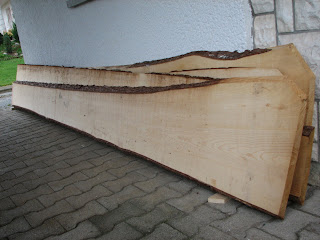-Lescom d.o.o. : there I bought all the wood used in the build (mahogany and sitka spruce). They were very kind and helpful, the guys in the warehouse were helpfull in selecting the right boards, altough they do reserve the right to charge extra 20% if you pick your boards one by one, but I think that has to do with the fact that they have a lot of work, and it would take too much time if everybody would be too picky. But I demanded 1st class wood, and they delivered. From the 5 boards I looked at, I took 4 and only rejected one, so overall I can recomend them, and they also have good selection of various woods in various qualities, and a huge stock.
-Mirnik TG d.o.o. : This company offers complete solutions for all epoxy & fiberglass work. They offer everything from foam core to vaccum infusion solutions, carbon, aramide & glass fabric, and all the little things that you need. They were also very helpfull and answered all my questions, and I was also able to buy small fabric samples to try them. Another company that was recomended is www.nicro.si, but they only sell epoxy, no fabric. I also contacted Garbas CO d.o.o., but they specialize in bigger costumers, so they were not helpfull when I mentioned that I would not buy a whole bale of fabric. So I was most satisfied with Mirnik d.o.o., as they have everything on stock, catter to small costumers, and help you find the best solution for your needs. And their prices are competitive, and they offer all the materials from the cheapest to top of the line, so something for everybody.
-Mitol d.o.o. : glues for everything, I used their glue for wood and it works great.













































